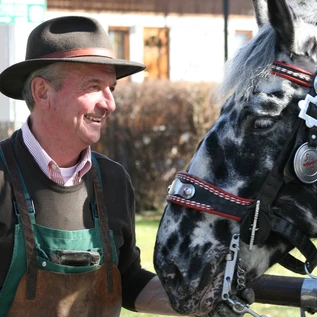Visit us at
Fürst Mozartkugeln | © Fürst
City feeling
A Salzburg Original: the Mozartkugel
Practically everyone knows this seductive temptation in the form of a chocolate praline sporting Mozart’s name. It entices us behind the many display windows of souvenir shops, inviting us to succumb to unrestrained indulgence. Salzburg visitors with an ear for a good story probably already know how it came to be invented and how to distinguish a Mozartkugel that’s “Original” from one that’s “Authentic”. So, how many different Mozartkugel variants are there in Salzburg actually?
A short digression into history: Where did it originate?
The Mozartkugel was invented by Salzburg confectioner Paul Fürst in 1890. From the very beginning, the ingredients were of the highest quality. And to ensure that employees didn’t secretly snack on the expensive chocolate, they were actually required to whistle while they worked in the bakery. Since, as you might imagine, whistling and eating at the same time is a rather tricky proposition. In 1905, Paul Fürst received lots of praise along with a gold medal for his Mozartkugel at the World Exposition in Paris. Back in those days, it still wasn’t customary to patent ideas, which meant that this praline was soon copied on an industrial scale by the millions. That said, today no one else is allowed to use the name “Original Salzburger Mozartkugel”, while the silver-and-blue tin foil wrapping with Mozart’s portrait has been a registered trademark since 1997. Production, now run by the fifth generation of the Fürst family, moved from Brodgasse to the new factory in Elsbethen in 2024. Their products can be purchased at four different stores in the Salzburg historical district.
Why isn’t an Original Mozartkugel perfectly round?
This sweet treat of marzipan, pistachios, nougat and dark chocolate is made by hand. Around 3 ½ million are produced annually, equating to roughly 10,000 a day! First, the balls are shaped, stuck onto wooden sticks and dunked in chocolate. Once the chocolate coating is dry, the stick is removed. Which leaves a hole, of course, which has to be filled. Et voilà: All of a sudden they have a “belly button”, which makes these hand-dipped creations unmistakable. Incidentally: The Original Mozartkugel is made without any artificial preservatives, meaning that they can only be kept for about eight weeks. In contrast, the industrially produced versions have a shelf life of around 10 to 12 months.
Solution to the puzzle: How many different Mozartkugels are there in Salzburg?
We set out in search of the answer to this question. It didn’t take us long to discover 13 (!) different types of Mozartkugel! All of them feature a more or less dashing portrait of Mozart on the wrapping, while many also display the name of the manufacturer. If you pay a little closer attention, you will notice that there are a few names that dominate the market: These include the Originale Mozartkugel from the Fürst family, along with the red-and-gold versions produced by Mirabell and Reber. In fact, the last of these is the world’s biggest producer of Mozartkugels and is actually based in Bad Reichenhall, Bavaria, precisely 12.7 km from the original Konditorei Fürst location in Brodgasse. Reber puts out an incredible 180 million Mozartkugels annually, approximately half a million every day.
Tour de Mozartkugel: Tracking this praline through the Salzburg historical district
Chocoholics discover their own personal corner of heaven here in Salzburg. At Café Habakuk in Linzergasse, it is above all nougat fans who will be able to feed their addiction: a shell of Swiss chocolate is filled with high-quality Gianduja nougat from Italy. Back in around the year 1900, Konditorei Schatz also began to sell Mozartkugels in a so-called through-house off the Getreidegasse. Mozartkugels are also sold at Confiserie Holzermayr and in Reber Laden on Alter Markt, at braunpunkt in Judengasse, by Hofbauer as well as Dallmann (St. Gilgen) and the chocolate balls by Viktor Schmidt are sold at the Manner-Shop on Residenzplatz. Faced with this virtual jungle of Mozartkugels, one thing is clear: You have no choice but to sample as many of them as possible in order to find your own personal favorite! But if you want to enjoy this praline straight from its original inventor, if you want to support traditional manufacturers located in the heart of the Salzburg historical district and if you value freshness, you will likely want to make a beeline to Konditorei Fürst!
The conclusion is clear: Whether your greatest weakness is for dark chocolate, nougat or marzipan: The Mozartkugel is as much a part of Salzburg as the Festival and Hohensalzburg Fortress. And as a souvenir, this sweet-and-playful passion of Salzburgers is welcomed around the world.














